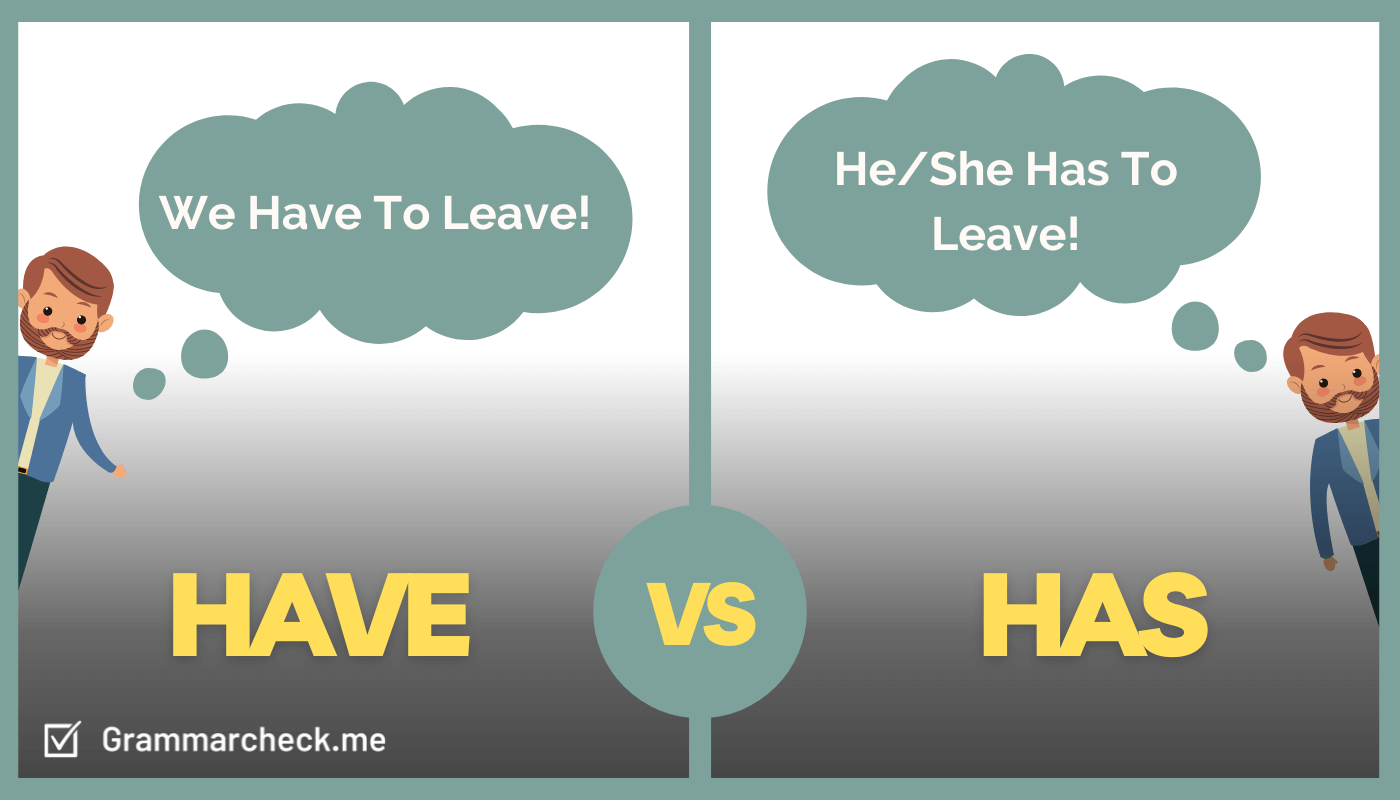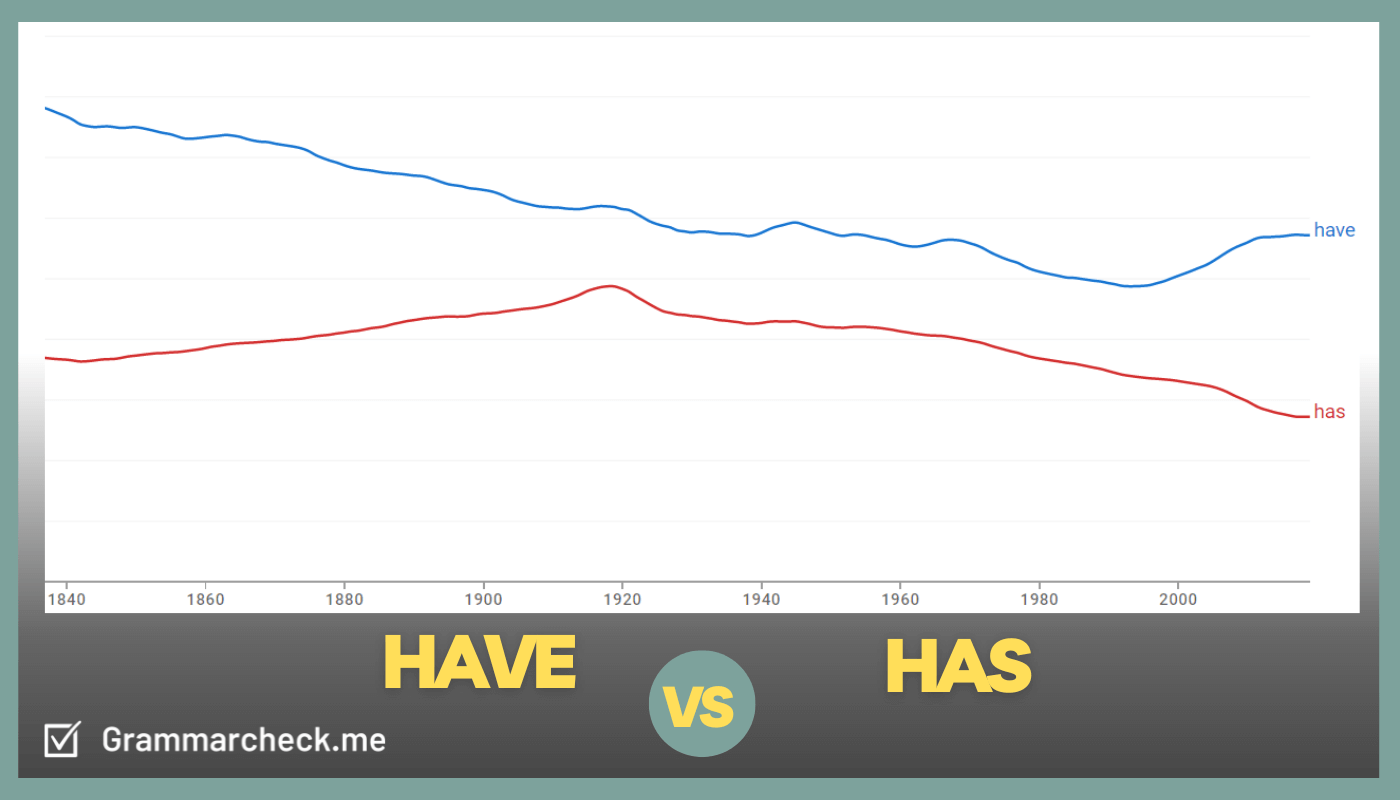There are many spelling, punctuation, and grammar rules that make the English language hard to master. The phrases “he has” or “he have” can be particularly tricky for new writers to get right. Choosing between have vs have is never easy. Especially because they have very similar use cases! In this post, we’ll help you pick correctly between he have or has so that you don’t make an embarrassing typo.
Always using the right words? Make sure:
Check Your TextWhat’s The Difference: Does He Have or Has A Car?

Just like we saw in our analysis of the difference between are vs is, some words are very difficult to use correctly. The words have & has are among the most commonly confused. Luckily, there are some basic rules to help you understand them better.
- Have: This means to experience or possess something. It is used with plural nouns & pronouns (I / You / We /They)
- Has: Has the same definition, to experience or possess something. It is used with singular nouns & pronouns (She/he / It /Who)
Takeaway – Both words have almost identical meanings. However, has is only used to discuss in the third person singular viewpoint.
When To Use The Word Have
As we already discussed, the word “have” is used as a verb to indicate possession or ownership.
- “I have a car.”
- “They have a car.”
- “We have a car.”
Just like was saw with the words seen and saw, it can also be used as an auxiliary verb to form the present perfect and past perfect tenses. Here are some examples.
- “I have eaten breakfast”
- “I had finished my homework before you arrived.”
- “We have spent all our money.”
Sentence examples
Here are some sentences to illustrate how to use the word have in your writing.
- You have to come over if you want my leftover clothes.
- Based on our customer’s request, we have no choice but to improve our product.
- I have no clue what homework was assigned by Mrs. Brown.
- We have to start training now if you want to run a marathon this summer.
- You have to take your job seriously if you want to get a raise.
Just like we saw in our analysis of nosey or nosy, spelling makes a huge difference. So pay close attention to your spelling & word choice!
When To Use The Word Has
The word “has” is most commonly used to discuss in the third person singular. Writes use it to indicate possession or ownership in the present tense. For example,
- “He has a car.”
- “She has a car.”
- Tom has a car.”
It is also used as an auxiliary verb to form the present perfect tense. Our post on the difference between run vs ran perfectly demonstrates he difference between future, past, and present tense.
- “He has eaten breakfast.”
- “She has eaten breakfast.”
- “Tom has eaten breakfast.”
Sentence Examples
Check out these sentence examples to learn how to use the word has in your writing.
- She has my favorite sweater in her car.
- He has no right to speak to me that way.
- Tom has to come to dinner tonight because he’s starving.
- Mike has the car that I lent to him last week.
- I just saw Mark, he has his favorite jacket on.
Just like we saw in our post about the word spelt, word choice can completely change the meaning of a sentence!
Popularity Analysis

By examining Google’s n-gram data it is clear that have is used more in published writing. Although both words have been used less frequently since the 1920s, have is used more.
Just like we saw when analyzing the phrase “discussed about“, things change over time. You will see words come in and out of popularity as culture changes.
Frequently Asked Questions
It is correct to say “he has” in your writing. The verb has should be used with a third person singular pronoun. Both have and has are most commonly used in the present tense. However, have should be used with plural nouns and has should be used with singular nouns.
The verb have is most commonly used to mean that someone possesses something or to do something. The verb has indicated that someone (the subject) has done something in the past. Has should also only be used when speaking in the third-person singular form. Have can be used to discuss in the first person.
The correct form is to say “he has” in a sentence. Has should be used when communicating in the third person singular. The only time you use “have” in the third person singular is when you use the pronouns “I” or “you”.
It is correct to say “he has a car”. Have should be used in the first person, second person, and the third person plural points of view. You can also form the present perfect tense by adding a past participle like played with the word has. For example, “She has played hockey for 6 years.”
The Bottom Line
By now it should be clear how to use these present tense verbs in your writing. Both of these words act as an auxiliary verb & are used to produce similar meanings. However, they are paired with different pronouns. It is correct to say “he has” but incorrect to say “he have”. However, you could say “you/we/they have” instead! If you need extra help with this grammar rule, consider using our rewording generator to get your sentences structured correctly.
